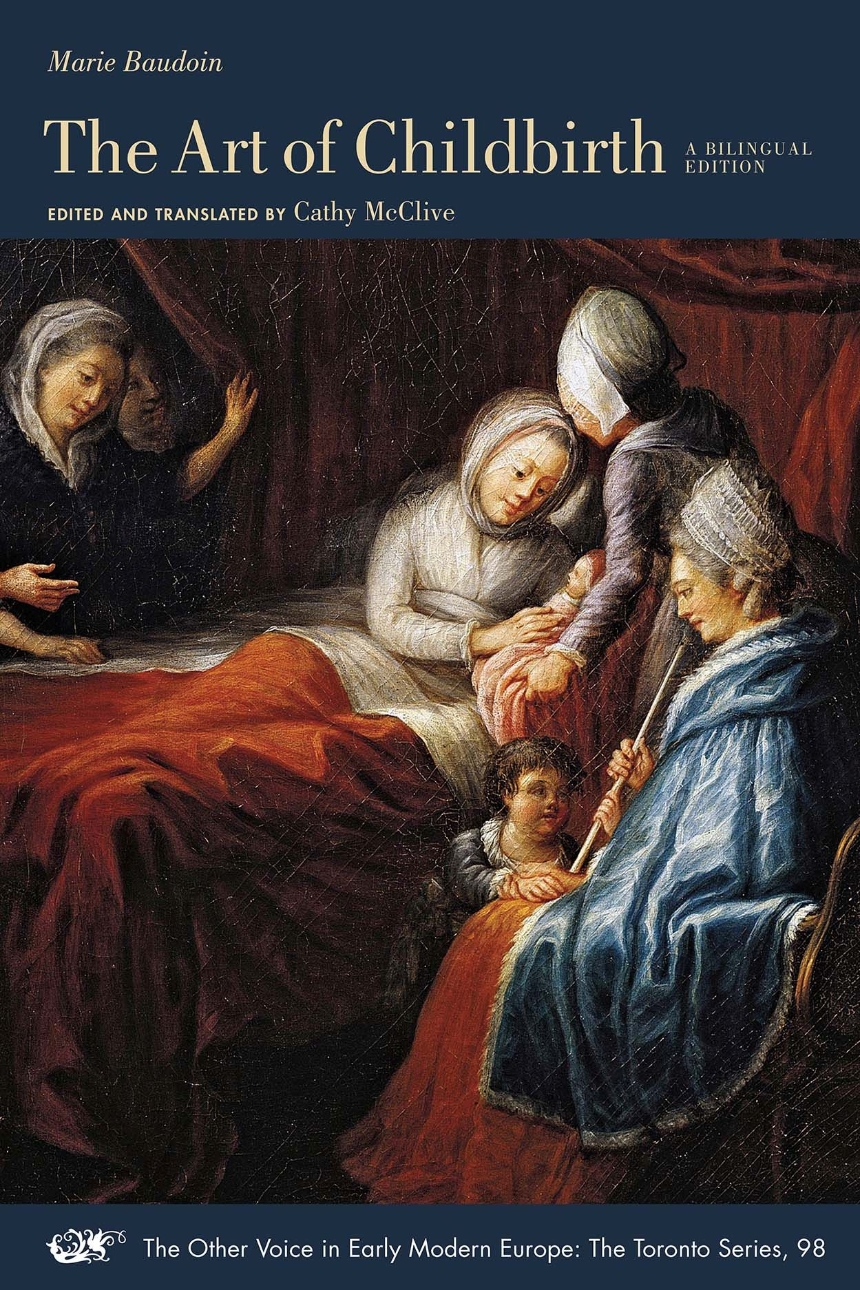The Art of Childbirth
A Seventeenth-Century Midwife’s Epistolary Treatise to Doctor Vallant: A Bilingual Edition
9781649590787
9781649590794
Distributed for Iter Press
The Art of Childbirth
A Seventeenth-Century Midwife’s Epistolary Treatise to Doctor Vallant: A Bilingual Edition
The extraordinary story of a seventeenth-century French midwife and her treatise on childbirth.
In 1671, Marie Baudoin (1625–1700), head midwife and governor of the Hôtel-Dieu of Clermont-Ferrand, sent a treatise on the art of childbirth to her powerful Parisian patron, Dr. Vallant. The story of how Baudoin’s knowledge and expertise as a midwife came to be expressed, recorded, and archived raises the question: Was Baudoin exceptional because she was herself extraordinary, or because her voice has reached us through Vallant’s careful archival practices? Either way, Baudoin’s treatise invites us to reconsider the limits of what we thought we knew midwives “could be and do” in seventeenth-century France. Grounding Marie Baudoin’s text in a microanalysis of her life, work, and the Jansenist network between Paris and Clermont-Ferrand, this book connects historiographies of midwifery, Jansenism, hospital administration, public health, knowledge and record-keeping, and women’s work, underscoring both Baudoin’s capabilities and the archival accidents and intentions behind the preservation of her treatise in a letter.
In 1671, Marie Baudoin (1625–1700), head midwife and governor of the Hôtel-Dieu of Clermont-Ferrand, sent a treatise on the art of childbirth to her powerful Parisian patron, Dr. Vallant. The story of how Baudoin’s knowledge and expertise as a midwife came to be expressed, recorded, and archived raises the question: Was Baudoin exceptional because she was herself extraordinary, or because her voice has reached us through Vallant’s careful archival practices? Either way, Baudoin’s treatise invites us to reconsider the limits of what we thought we knew midwives “could be and do” in seventeenth-century France. Grounding Marie Baudoin’s text in a microanalysis of her life, work, and the Jansenist network between Paris and Clermont-Ferrand, this book connects historiographies of midwifery, Jansenism, hospital administration, public health, knowledge and record-keeping, and women’s work, underscoring both Baudoin’s capabilities and the archival accidents and intentions behind the preservation of her treatise in a letter.
254 pages | 12 figures | 6 x 9 | © 2022
The Other Voice in Early Modern Europe: The Toronto Series
History: European History
Literature and Literary Criticism: Romance Languages
Women's Studies:
Reviews
Table of Contents
Illustrations
Acknowledgments
Introduction
A Midwife’s Life and Work
Who Was Marie Baudoin?
Marie Baudoin as a Jansenist Woman
Clermont-Ferrand: Hospitals and Jansenists
Mme Baudoin’s Career at the Hôtel-Dieu in Clermont-Ferrand
Communities: Religious, Scientific, Financial, and Emotional
A Physician, a Midwife, and Their Jansenist Networks
A Woman of Means: Mme Baudoin’s Credit Networks and Financial Acumen
Midwifery in Early Modern France
Midwifery Texts in Seventeenth-Century France
Midwifery Training in Mid-Seventeenth-Century France
Midwifery Work and Practice in Seventeenth-Century France
Surgical Instruments and the Performance of Expertise
The Treatise in a Letter
Epistolary Midwifery
The Letter as Material Object
Unseen and Unpublished: The Hidden Treatise
Vallant’s Portefeuilles: Record-Keeping and Archival Afterlives
Why Did the Treatise Remain Unpublished?
Reception and Afterlife of the Treatise
Notes on the Transcription and Translation
Transcription
Translation
Key to Transcription and Translation
Translation of Mme Baudoin’s Epistolary Treatise
Transcription of Mme Baudoin’s Epistolary Treatise
Bibliography
Index
Acknowledgments
Introduction
A Midwife’s Life and Work
Who Was Marie Baudoin?
Marie Baudoin as a Jansenist Woman
Clermont-Ferrand: Hospitals and Jansenists
Mme Baudoin’s Career at the Hôtel-Dieu in Clermont-Ferrand
Communities: Religious, Scientific, Financial, and Emotional
A Physician, a Midwife, and Their Jansenist Networks
A Woman of Means: Mme Baudoin’s Credit Networks and Financial Acumen
Midwifery in Early Modern France
Midwifery Texts in Seventeenth-Century France
Midwifery Training in Mid-Seventeenth-Century France
Midwifery Work and Practice in Seventeenth-Century France
Surgical Instruments and the Performance of Expertise
The Treatise in a Letter
Epistolary Midwifery
The Letter as Material Object
Unseen and Unpublished: The Hidden Treatise
Vallant’s Portefeuilles: Record-Keeping and Archival Afterlives
Why Did the Treatise Remain Unpublished?
Reception and Afterlife of the Treatise
Notes on the Transcription and Translation
Transcription
Translation
Key to Transcription and Translation
Translation of Mme Baudoin’s Epistolary Treatise
Transcription of Mme Baudoin’s Epistolary Treatise
Bibliography
Index

